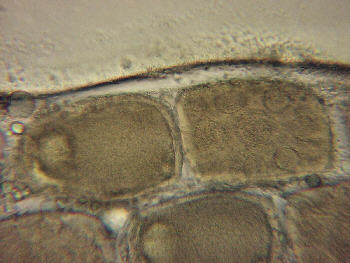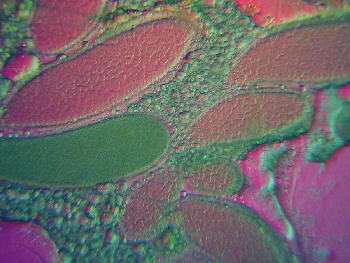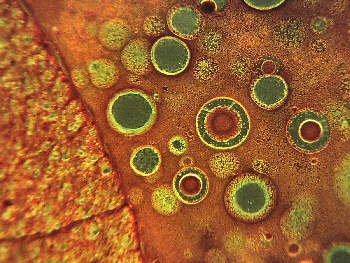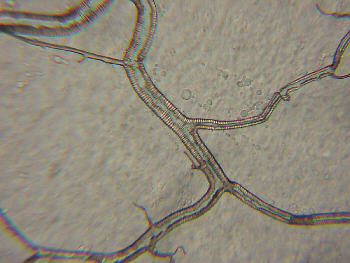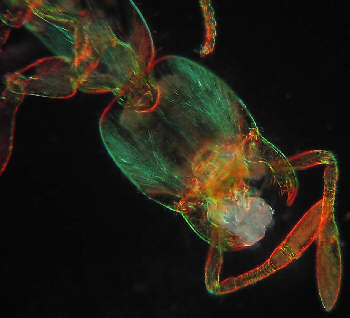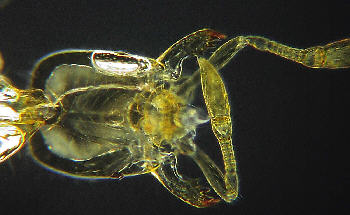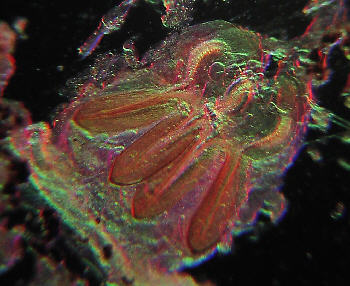Design:
As you can see, it's basically
just a tube with a relay lens situated close to the camera's own zoom lens.
I don't know the exact power of the relay lens, but it should be as large
or preferably a bit larger in diameter than the camera lens. Since the
relay lens replaces the microscope eyepiece, it must be a good quality
lens, free of scratches etc.
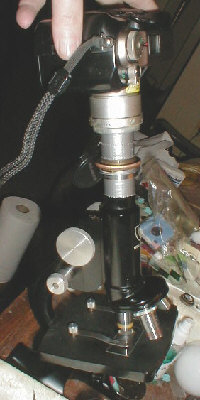 |
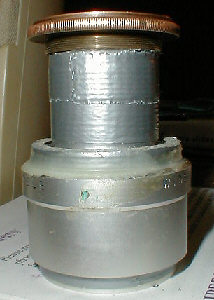 |
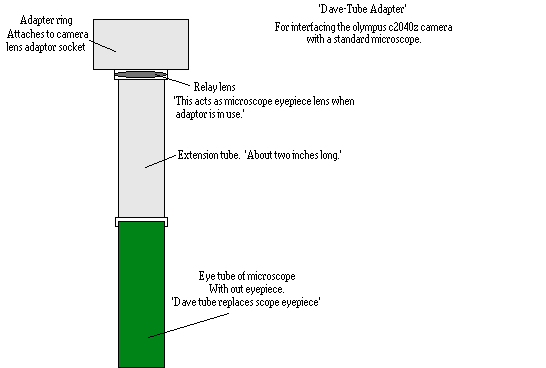
To use:
The eyepiece is removed from the microscope after initially focusing by eye. The adapter is placed over the open end of the microscope drawtube. The sleeve at the end of the adapter tube allows it to slide over the end of the drawtube. (This prevents sideways movement which makes aligning the camera with the 'scope much easier!)
The camera can be aligned using the LCD image as feedback. Lens aperture should be about f2.8 and focus should be set to manual. Use the controls on the microscope to focus the camera. Exposure metering is set to matrix mode with the camera set to aperture priority mode. The optical zoom can be used to make moderate adjustments to magnification.
The photos below were taken with the digicam on an AO Spencer microscope.
Comments to the author
David
Young are welcomed.
